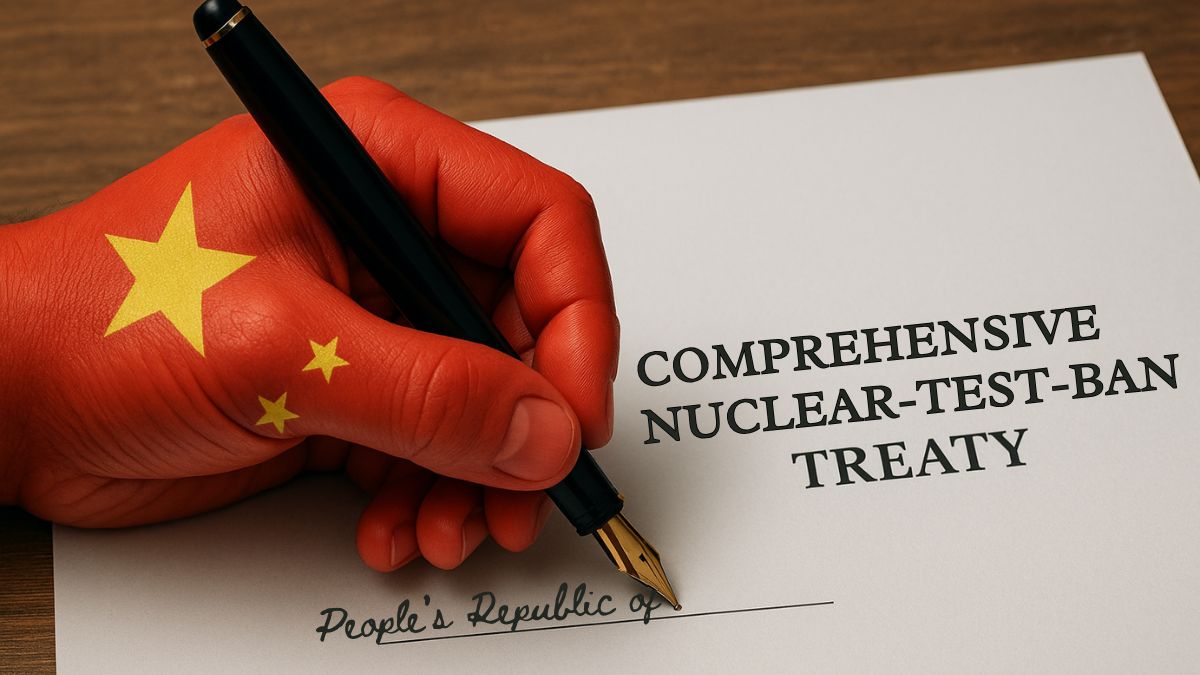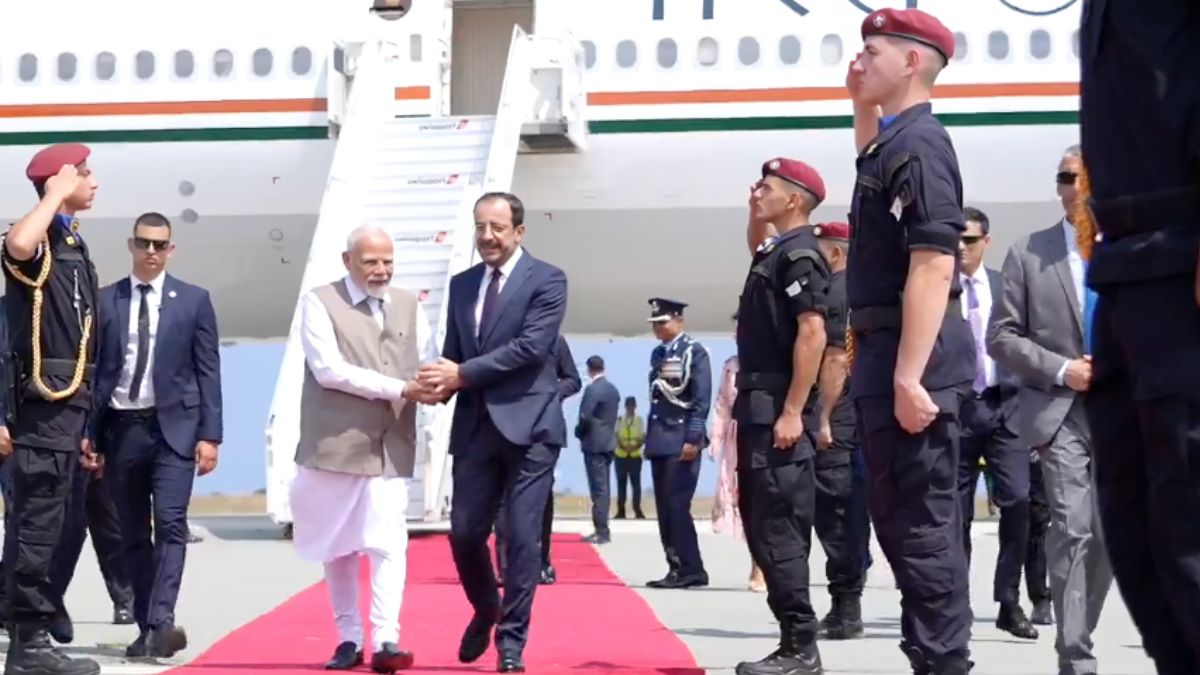1996 Moratorium: Did China Really Close the Chapter?

In 1996, China signed the Comprehensive Nuclear Test Ban Treaty. It has not ratifed the CTBT. Image courtesy: AI-generated image via Sora
In July 1996, the People’s Republic of China (PRC) conducted what it called its final nuclear test at Lop Nur in Xinjiang. Just weeks later, in September, Beijing signed the Comprehensive Nuclear-Test-Ban Treaty (CTBT).
On the surface, these actions suggested a conclusive end to its testing era. Yet, nearly three decades later, the reality is less definitive.
China never ratified the CTBT, preserving deliberate ambiguity over whether the chapter on nuclear testing is truly closed. For the People’s Liberation Army (PLA) and the Communist Party leadership, that ambiguity has remained a strategic asset, shaping perceptions in Washington, Moscow, and New Delhi alike.
The Last Test: 29 July 1996
China’s final declared nuclear test took place on 29 July 1996 at the Lop Nur site. This capped a testing campaign that began with its first detonation in 1964 and included 45 confirmed tests.
The 1996 detonation was widely interpreted as a “validation shot” for Beijing’s newer warhead designs, particularly those intended for smaller, mobile missile systems. By conducting this test just before the CTBT opened for signature, Beijing ensured it locked in technological gains while posturing as a responsible international actor.
Signing the CTBT: September 1996
In September 1996, Beijing joined the United States, Russia, and other nuclear powers in signing the Comprehensive Nuclear-Test-Ban Treaty (CTBT). The symbolism was clear: China wanted recognition as a legitimate nuclear state that had now “joined the club” of restraint.
However, the lack of ratification created a gap between diplomatic performance and legal commitment. Unlike France and the UK, which swiftly ratified the CTBT, China kept its position fluid.
Why China Hasn’t Ratified
China’s non-ratification has several drivers, such as:
Strategic Ambiguity: The PLA views uncertainty as leverage. By not foreclosing the option of future tests, Beijing maintains flexibility in response to US or Russian moves.
Technological Hedge: While China insists it can maintain its arsenal through simulations and subcritical tests, doubts remain about whether its warhead miniaturisation for multiple independently targetable re-entry vehicles (MIRVs) is fully validated. Non-ratification keeps the door open to further underground testing if required.
US Senate’s CTBT Rejection (1999): Beijing cites Washington’s failure to ratify the CTBT as justification for its own hesitation, effectively tying its hands to America’s. This tit-for-tat reasoning masks a deeper Chinese preference to keep testing as a latent option.
Suspicions of Continued Activity
In recent years, US intelligence and independent researchers have raised questions about possible low-level activity at Lop Nur. Satellite imagery has pointed to new tunnels, expanded infrastructure, and increased personnel presence at the site.
While these do not prove fresh nuclear detonations, they sustain suspicion in Washington and Moscow that Beijing might be conducting high-explosive experiments or preparations for “rapid restart” testing.
Russia, too, has voiced concerns; partly to justify its own testing rhetoric, but also because of China’s accelerated nuclear expansion. The US-China-Russia triangular dynamic has made the CTBT’s fragility even more visible.
Implications for India’s Army Planning
For India, China’s ambiguous stance has direct consequences. The PLA Rocket Force’s growing arsenal of MIRVed missiles, hypersonic glide vehicles, and mobile launchers stems from a foundation laid in the 1990s.
If Beijing resumes even limited testing, it could accelerate warhead miniaturisation and boost-yield warhead reliability, deepening the strategic gap with India.
For the Indian Army, which must plan for deterrence contingencies along the northern border, the uncertainty over China’s nuclear posture complicates scenario planning. India itself declared a voluntary moratorium after its 1998 tests, but unlike China, New Delhi has not signed the CTBT.
This parallel means that India cannot ignore Beijing’s ambiguity; it must prepare for a potential Chinese breakout from the moratorium, while balancing restraint with readiness.
Ambiguity as Strategy
China’s 1996 moratorium was less a final curtain than a pause with strings attached. By signing but not ratifying the CTBT, Beijing positioned itself as cooperative while retaining the freedom to walk back if its strategic environment shifts.
This posture aligns with a broader PLA approach: never reveal full intentions, always preserve options, and exploit uncertainty for leverage.
For global arms control advocates, China’s stance is frustrating. For the PLA and the Communist Party, it is deliberate. The ambiguity allows Beijing to deter adversaries with the possibility, however remote, of renewed testing, while maintaining the narrative of a responsible power constrained by US obstructionism.
Conclusion
China’s last nuclear test in 1996 and its CTBT signature the same year were historic moments. Yet the story did not end there.
By refusing to ratify, Beijing kept alive a calculated uncertainty that continues to ripple through regional and global security debates.
For India, the lesson is stark: China thrives on leaving doors ajar. Its moratorium may look like closure, but in truth, it is an opening into a future of nuclear hedging, mistrust, and intensified competition.







